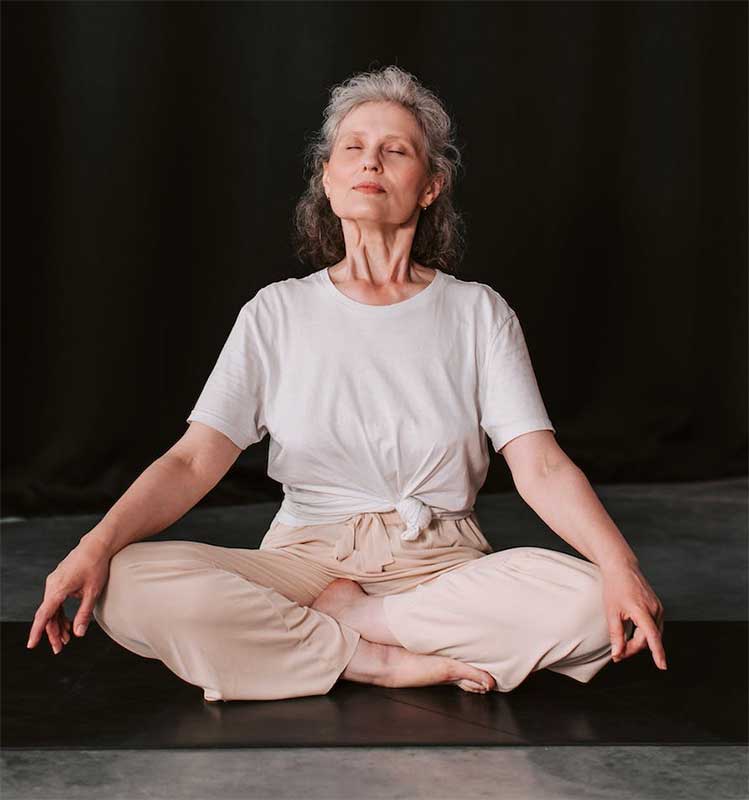By: Jennifer Beach, LSW, MA, C-SWCM

Almost everyone reading this article likely has been in one or more of the following situations: cared for someone with dementia or a chronic illness, called 911, sat in an emergency department with someone, received negative information from a doctor or lost a loved one. When any of these situations occur or an infinite number of other stressful scenarios, it can take our breath away, literally.
In stressful situations, our energy leaps up into our chest and unconsciously, we gasp and grab our chest. Why?
Because our body already knows how to help us stay grounded. We need air, we need to breathe. When we practice and learn to apply breathing techniques consciously,
we become aware of the brave space that resides within us that is capable of holding our emotional pain and can get us through challenging situations. When we are grounded, our energy resides low and deep in our body, giving us a feeling of relaxation or calm. When we are stressed or anxious, our energy rises up into our chest and we may feel uptight, fearful,
nervous or anxious. There is extensive research and a wealth of information which helps us to understand how our breathing affects not only our respiratory system but our heart, brain, digestion, immune system, and maybe even the expression of our genes.
One study at the Feinstein Institute for Medical Research (2018) looked at how the brain responds to different breathing exercises to see how participants’ breathing rates varied across different tasks, and noted whether their brain activity changed depending on which
task they were doing. They found that breathing affects brain regions including the cortex and midbrain more widely than previously thought. All told, the result of the study supports a link between types of breathing (rapid, intentional and attentional) and activation in brain
structures involved in thinking, feeling, and behavior. This raises the very strong possibility that particular breathing strategies may be used as a tool to help people to manage their thoughts, moods and experiences, and help us through the most stressful challenges we may face.
There are many types of breathing techniques. One of my favorites is diaphragmatic breathing (aka belly breathing). This breathing pattern can help you use your diaphragm properly. Also, this technique of breathing is particularly helpful in people with breathing challenges due to COPD, heart problems, cancer, and many other medical conditions.
1. Lie on your back with your knees slightly bent and your head on a pillow.
2. You may place a pillow under your knees for support.
3. Place one hand on your upper chest and one hand below your rib
cage, allowing you to feel the movement of your diaphragm.
4. Slowly inhale through your nose, feeling your stomach pressing into
your hand.
5. Keep your other hand as still as possible.
6. Exhale using pursed lips as you tighten your abdominal muscles,
keeping your upper hand completely still.
You can place a book on your abdomen to make the exercise more difficult. Once you learn how to do belly breathing lying down, you can increase the difficulty by trying it while sitting in a chair. You can then practice the technique while performing your daily activities.
There is a tremendous amount of research and information available proving the many benefits of learning-controlled breathing techniques. We all will continue to face many unknown and ongoing challenges in our lives, and to know we can easily access a way to
help our bodies manage through the most stressful situation is comforting and helps build our resilience. Try to practice breathing techniques. It will help and allow your body to continue to breathe, even when life takes your breath away.
Original Article: https://www.northeastohioboomer.com/blogs/just-breathe/

